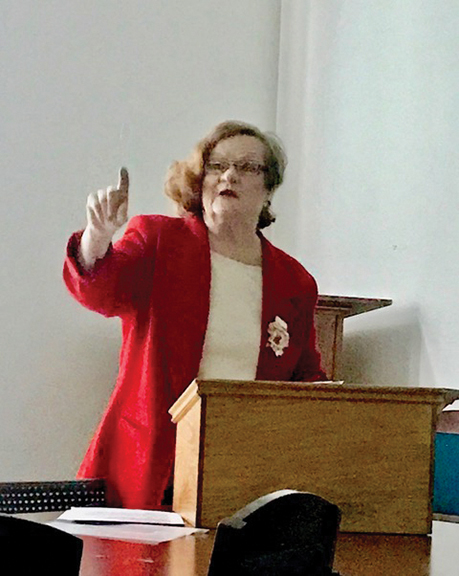The Valley Chronicle - Library talk addresses historic U.S. and local
Library talk addresses historic U.S. and local disasters
·
3 min read
Part 1 explores historic disasters and preparedness strategies
[caption id="attachment_17071" align="alignright" width="459"] Gena Estrin / The Valley Chronicle
Gena Estrin / The Valley ChroniclePenelope Engard addresses audience at First Friday lecture at Hemet Public Library on historic natural disasters in the U.S. As its name implies, the First Friday talk is presented at 10 a.m. on the first Friday of every month in the Hemet Library.[/caption] ■ By Dennis Fletcher / Contributed The last time the First Friday program was held at the Hemet Library, Penelope Engard focused on historic natural disasters in the U.S. and Carol Frances presented the history of Saint Patrick’s Day. Engard led a fascinated audience, including members of a CERT (Community Emergency Response Team) team in the valley, through a litany of natural disasters going back to 1888. Presentations at the monthly First Friday events include a lecture accompanied by projected slides, handouts, and examples of what is being discussed, as well as active participation by the audience. Floods and storms Engard’s talk began with the Great Blizzard of 1888, aka the Great White Hurricane. It paralyzed the Eastern Coast of the U.S. from Maine to Chesapeake Bay, with snow 55 inches deep in New York City. Both the telegraph and railway lines were incapacitated, forcing a new trend to move those services underground. Perhaps the most famous flood of all time in North America was the Johnstown Flood on May 31, 1889. Four square miles of Johnstown, Penn., were totally destroyed. An improperly built dirt dam broke following days of hard rain and released 20 million tons of water from Lake Conemaugh and surrounding rivers. This dirt dam construction is similar to our local dam at Lake Hemet. During the disastrous Johnstown Flood, 313 people died at the Gautier Wire Works alone, trapped within the barbed wire inside the factory. The entire flood lasted 65 minutes. Some 2,209 people died (one third were never identified) including 99 entire families and 396 children. Total damage was assessed at $17 million which would be $474 million in today’s dollars. Massive rescue efforts were led by Clara Barton and the newly-formed Red Cross that she headed. Closer to home, in the Inland Empire, the Flood of 1938 was followed by the Flood of 1969. Both were caused by torrential rain storms moving across Southern California. In 1938, Big Bear Lake rose 20 inches on March 2, some 15 people drowned along the Santa Ana River, and in Orange County, 40 died in huge areas of flooding. The Flood of ’69 was even worse, with 50 inches of rain at Mt. Baldy, hundreds of homes lost in landslides, and more than 100 lives lost. Earthquakes The biggest temblor in recent history was the 7.7–7.9 San Francisco Earthquake of 1906 that lasted one minute and burned the city to the ground due to the lack of water for firefighters. It destroyed 80 percent of the city and caused $400 million in property damage, a number that today would be closer to $8.2 billion! Over 225,000 of the city’s 400,000 people were left homeless, an estimated 3,000 lost their lives, and 500 looters were shot by police and military. Fortunately, the residents of San Francisco in the early 1900s were a hardy lot and knew well how to survive hardships. Everyone took someone in, so few lacked shelter. Engard then presented the nearly packed room with a slide showing the tectonic plates and their movements that are the cause of so many earthquakes along the California Coastline and the eastern edge of the Pacific Rim. On the topic of quakes, Engard told about the big one in Hemet on Christmas Eve in 1918 that registered 6.7 on the Richter Scale. It left six women dead on Soboba Drive who were preparing for Christmas Day service at St. Joseph Catholic Church on the Soboba Indian Tribe Reservation. The second floor of the Hemet Opera House also was destroyed. The next big earthquake in our valley is expected to occur along the San Jacinto Fault Zone that runs south through Lamb Canyon along Highway 79 and then turns east along Soboba Road. Following Engard’s talk, a short discussion of earthquake preparedness ensued with all in the Library Conference Room agreeing it is, or should be, a top priority in our valley. First Friday meets at 10 a.m. on first Fridays of each month in the Hemet Public Library. More information: tjtraker1743@gmail.com, (951) 357-7733. Next week: How CERT supports natural disaster preparedness.
S
